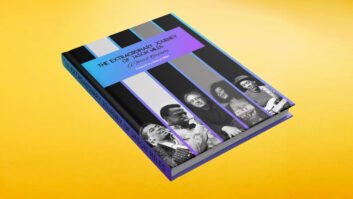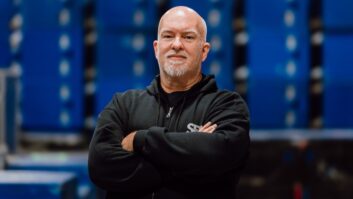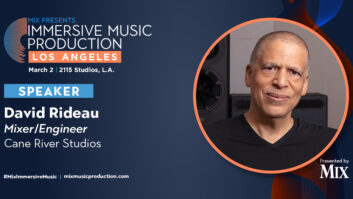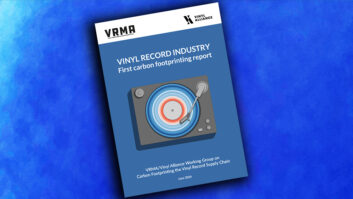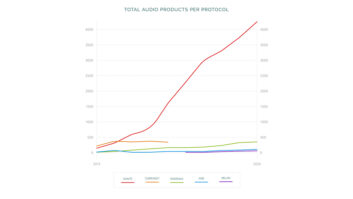Professional associations with the likes of Miles Davis, The Crusaders, Michael Jackson, Whitney Houston and Brian Setzer would tame the ambition of many musicians, but keyboardist Jason Miles, whose reputation as a synth programming whiz early in the MIDI era led to gigs with a group of stellar musicians, wanted more. The grueling pace of session work and understanding that the job of a programmer is to develop a tool set that others will use creatively led Miles to expand into production, where he could set the pace, select material (including some of his own compositions), and do more playing and arranging. His production credits include work with Vanessa Williams, Michael Brecker and Heavy D.
Miles operates a project studio out of his home in a leafy, upstate New York community. Here he writes, arranges and mixes his work, including his latest recording, Celebrating the Music of Weather Report. When Mix caught up with Miles, the last nuances had been applied and he was preparing for his next endeavor, a tribute to his friend and colleague, Brazilian composer Ivan Lins. Lins’ work may be underappreciated by the average North American music fan, but a roster of major-label talent, including Sting, Dianne Reeves, Grover Washington Jr. and Michael Franks are already onboard to help Miles increase his visibility.
The Weather Report tribute will be released on Telarc in February. “I’ve always loved Weather Report,” Miles says. “They were a huge influence on me and many other musicians. I responded most to their probing, exploring way of working; they had a freedom of expression that is often lacking today.” Which begs the question: How do you rejoice in musical freedom and record a CD that stands a chance of finding a place in a current market that is more delineated (read: restricted)?
“Well, that’s the question!” Miles quickly replies. “Let’s put things in sequence: In 1998 I got a call from Jay Beckenstein of Spyro Grya. He was making a solo record and wanted me to produce several tracks-he’s got his own studio, BearTracks, in Suffern, N.Y., which is not far away from me. I like to work with sounds and music from other cultures, so I picked out an African tune for him to consider. He also wanted to record Weather Report’s ‘Black Market.’ I came home and started working on an arrangement of the tune, and I liked the fact that Jay told me to make it sound like me without trying to reproduce the original recording. I put chanting into the chart, and some samples that you wouldn’t normally associate with that piece-sort of the Year 2k version of the tune!
“During our work on this track, we realized that no one had done anything with the music of Weather Report. Jay prodded me to get something going, and so I put together some demos at my place and started shopping the project. Naturally, I was turned down by every label I approached. Fortunately, almost every artist I approached-Mike Brecker, David Sanborn, omar Hakim, Cyro Batista-said they wanted to participate, and so I kept pushing. Then one day I got a call from Tom Jung up in Connecticut. He’d heard my demos and said he thought he could hook me up with a label. Three days later Telarc called, and the deal fell into place smoothly.”
Miles arranged and produced all 11 cuts on the album, which includes classic Weather Report tunes like “Birdland” (featuring hot-as-can-be jazz guitarist Chuck Loeb), “Palladium” and “Harlequin.” “I like to think that I’m capable in these areas, but I also didn’t have a million-dollar budget, so I took on as many responsibilities as I could handle myself,” Miles notes.
The pre-production process was exhaustive and nonstop. “I closed myself in my basement for four weeks arranging the record-14-hour days spent putting MIDI tracks together. My wife wouldn’t even let me step out of the house to pick up the mail because I was unshaven and unkempt!”
As you would expect, Miles has an extensive synth rack, which includes a Kurzweil K22500xs and K2000, various E-mu, Korg and Roland modules, and an Alesis DM pro drum module. He uses two sequencers-an Akai MPC300, which he favors for its feel, and MoTu’s Performer. “I’ve been using Akai hardware sequencers for 12 years,” Miles says. “They have an amazing feel, great sync, and they’re extremely intuitive-I prefer working with them more than software sequencers. The advantage of software lies in their more powerful MIDI editing engines, and so I use Performer when I need this power.”
A Soundcraft Spirit mixer (32×8) sits at the heart of Miles’ operation. other boards include a Mackie 1604 and a custom 24-input Quest keyboard mixer. All mixing on the Weather Report project was done within Miles’ Macintosh computer using his PARIS hard disk recording system. Miles also owns a pair of Alesis ADAT XT20 MDMs (which were used extensively on the project), and he monitors his work through a pair of KRK Expose 8 speakers.
“After about four weeks of getting my MIDI templates together,” Miles explains, “I started sending out my sketches to the musicians I wanted to use on the record. omar was an original member of Weather Report, and so I asked him what tracks he wanted to play on [“Cannonball” and “Palladium”]. Marcus Miller picked out ‘Cucumber Slumber’ because Alfonso Johnson played [bass] on the original, not Jaco [Pastorius]. I needed a great player to play on ‘Harlequin.’ Fortunately, [keyboardist] Joe Sample agreed to help out.”
once the artist roster had been assembled, tune by tune, Miles set up a recording schedule. Flexibility was key, he says: “Michael Brecker, for example, might tell me that he was going to in Europe for three months, but would be in New York for a month in April, and so I’d book a studio for him during that period. A lot of the album was tracked at Shelter Sound. [Material was also tracked at New York’s Live Wire and BearTracks.] Same thing with Steve Gadd, who lives way upstate in New York.
“No MIDI tracks were sent out to the artists, only ADAT tapes,” Miles continues. “I have to say that the 20-bit ADAT sounds very, very good. Although everything eventually ended up in PARIS, I needed a universally accepted tape medium because of all the different studios that the project went through. People talk about the tape transport problems they experience with ADATs, but I only had one tape get chewed up, and it wasn’t an issue because I make three backups of every tape I use. I use BASF tape exclusively; the shell is good, and they come packed in tight cases, which I like.”
All of the ADAT tracks-16 wide or less, in all cases, matching Miles’ own studio setup-were ported over to PARIS, where he continued to build tracks. None of his MIDI tracks were left virtual. “I transferred all of my own performances to PARIS and then had a bunch of people come over to my house,” he says. “I recorded John Patatucci, Cyro Baptista, some of Aaron Heick’s sax work, and John Scofield here-in fact I miked John’s [guitar] amplifier in my bathroom!
“PARIS is really an amazing system. It’s very intuitive, and every channel has EQ and DSP dedicated to it,” he continues. “The graphics are great, and that’s very important to me. While you’re working under the gun, you want a system that handles all of the functions well but doesn’t confuse you, and PARIS does this very, very well. It really is built for musicians.
“Lots of musicians have setup problems, regardless of the hard disk platform they use, and you can avoid headaches by approaching your computer design carefully,” Miles says. “I use ultra Wide SCSI with a pair of Cheetah 9-gig drives. I have 168 megs of RAM and assign 100 megs to PARIS. The Waves plug-in package is excellent-I rely on it heavily. At all times during the mixing of this project, I had a Lexicon 480L plugged into the system, but I also used PARIS’s internal reverbs extensively; their plate is fabulous. Doug oberkircher, who is familiar with PARIS because he has a system of his own, mixed most of the project. Joel Moss, who was not familiar with the system, mixed the balance of this record, and he picked up on PARIS quite quickly.”
Though he enjoys working in hard disk media, Miles says, “At the end of the day, I want to have pieces of tape that I can hold onto, so all of our work is archived on ADAT tapes. If the worst comes to worst and everything crashes, I know that I can go to any studio and mix. Plus, Telarc is talking about doing a 5.1 mix of this record, and I don’t have the setup to execute that here. By transferring all of the material to ADATs, I know that I can go to another studio and do that work at any time.”
Miles gets back to the Big Question: “okay, so how do you take music that was so free and stream it to fit today’s marketing standards? I felt that not only the music, but the recorded sound of the Weather Report albums was interesting for the ’70s, but that if these compositions were to be successful today they had to be adapted-particularly the grooves-to fit current tastes.”
Smooth jazz, the likely outlet for this kind of work, demands pronounced, repeated melodies. “Right, and we took that into account. Back in the day, Weather Report took a more traditional, open head jazz approach to their compositions. The twist they brought was the use of electronic instruments. The kind of blowing they featured doesn’t fit into the playlist of smooth jazz stations, and I took this into account as well.
“The first concern was finding a couple of tunes that we could record with integrity and still fit into the radio mentality of today. We wanted a creative commerciality. This is not an artist-driven project, but a concept, and it has to be marketed as such. Chuck Loeb is not only a smoking guitar player, he’s enjoying success on smooth jazz stations with his own music, and so the album leads off with an arrangement of ‘Birdland’ that features him. We’re not sacrificing the integrity of the music, just letting it flow into an area that makes sense with the state of the market.”
